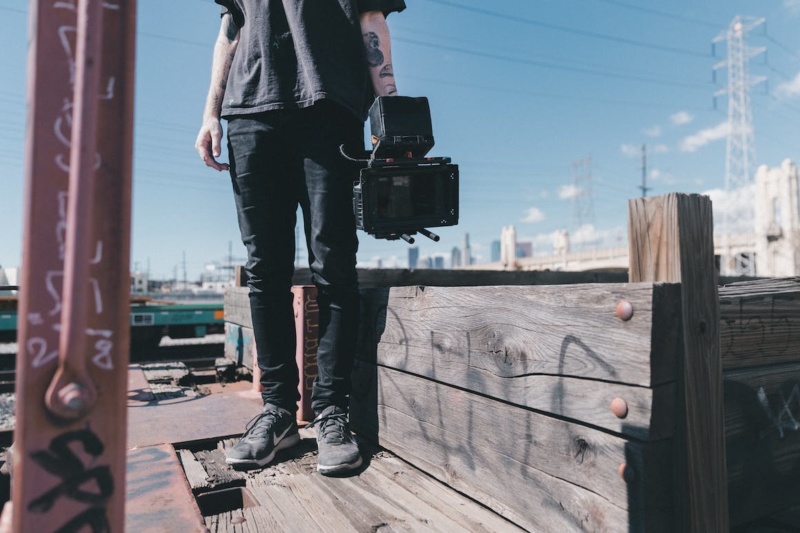If there’s anything harder than making a movie, it’s making your first movie. Many aspiring auteurs have compared it to having your first child — no amount of books or talking about the subject really makes you feel more confident about what lies ahead.
Luckily though, making your first feature film can be one of the most rewarding experiences of your life. You’ll have the honour to guide a crew of hundreds into realising your particular vision for a story. You’ll make decisions on everything — from the sound the monster makes to the look and feel of your heroine’s stylish khaki pants. Yes, mistakes will be made — but you’ll make them countless times again. However, the good news is you’re not going at it alone. Countless directors have made — and survived — this journey before you. Take a cue from their experiences, learn from their mistakes and be inspired to realise your vision.
Here are five established lessons from the industry every first-timer should know.
1. Pay careful attention to your (crowd)funding campaign
When considering investors, they’re a necessary evil for all independent film projects. In struggling to make their first major project come to life, the now-famous Coen brothers, Joel and Ethan, rounded up more than 65 private investors (entrepreneurs, doctors and small business owners) to fund the relatively small budget of $750,000 needed to make Blood Simple (1984).
Anyone who has ever produced an independent film will tell you this is nothing strange. It’s almost impossible to raise all the money you’ll need from only friends and family. Fortunately, we’ve entered a new age of independent film financing: crowdfunding. While raising money this way is advantageous, it also has some major drawbacks. You might be getting money from people all over the world, but major investments from specific companies or individuals do come with specific legal ramifications. For example, how much ownership does the individual receive for their investment and how will it be recouped?
Something else to remember when taking the crowdfunding route is that you’ll be competing with other filmmakers for support. It’s imperative that you must believe in the value of your project to set yourself apart. It’s also imperative that you put as much work and effort into your crowdfunding pitch as you would have to a hedge fund manager or private investor.
Remember to offer your donors some perks to show your gratitude. Part of designing your crowdfunding campaign will be to factor in perks based on the amount a donor pledges to your cause. For example, for a $50 donation, they’ll receive a DVD and a T-Shirt signed by all the actors.
Luckily for aspiring filmmakers, a whole raft of crowdfunding sites — from Indiegogo and Kickstarter to Juntobox and Seedrs — have sprung up in recent years specifically to address this new trend. Many successful projects have been realised this way, including the film version (2014) of the cult noir crime series Veronica Mars (2004–2007) that raised a record amount of almost $6 million this way. Be attentive. Know the worth of your project and convey that to the crowd and you’ll be surprised how willing people are to help.
2. Always storyboard your entire film beforehand
Once you have your funding in place and a story worth telling, it’s important to pre-visualize it. Even if you can’t draw to save your life, storyboarding your film before you start filming not only helps you organise shots, it also makes you intimately familiar with every detail and clue hidden in the script.
“Don’t be afraid to do this even if you’re not a good illustrator,” writes Rod Blackhurst, the director of Here Alone and the award-winning Netflix documentary on Amanda Knox. He decided to get the help of a proper illustrator to realise his rudimentary drawings. “The information and process are more important than whether or not your drawings look like a graphic novel or stick figures drawn by a 4th grader.”
For Rod, the true value of the storyboards came to fruition on set when each day’s scenes were printed out and taped onto large foam-core boards for all crew members to see. “These storyboard boards helped everyone quickly visualise exactly what we needed to accomplish that day.”
Even during the pre-production stage storyboards also offer a fantastic way for a director to show potential investors exactly what they have in mind for the project. You can have loads of conversations trying to explain your vision to a willing investor, but nothing conveys your vision quite as well as being able to show them proposed frames of your movie in sequential order.
3. Surround yourself with great collaborators
Speaking of people willing to help, first-time directors should always remember that they’re not making a film on their own. The craft of filmmaking requires many specific talents and trying to do everything yourself will only lead to a product of poor quality. Surrounding yourself with a team of people where everyone has their strengths is a much more advantageous approach. This also allows for a constant exchange of ideas and opportunities for mentoring from the industry veterans you chose to collaborate with.
“Don’t be afraid not to know everything,” explains Hossein Amini, the director of The Two Faces Of January (2014), his directorial debut. “Don’t be afraid to ask for help from your cast and crew. Confidence in listening to people makes you come across as collaborative, not clueless.” Hossein, a prolific screenwriter for many years before he decided to tackle his first project as director, says the greatest thing about being a first time director is the fact that people will do everything they can to help you if you’ll only let them.
That being said, remember to always show your appreciation for the people you surround yourself with on a set. Create an environment where cast and crew would enjoy what they’re doing and collaborating towards. This will go a long way to creating a set that everyone wants to be a part of.
4. Get out of your comfort zone
As a director, you’ll be wearing many hats, solving problems constantly. It’s important that you do not become complacent in your thinking and not be open to trying new ideas or different approaches to the ones you usually make. It’s an easy trap to surround yourself with ‘yes’ men — crew and cast that will merely accept your word as final. However, working with people that challenge your choices might make you uncomfortable, but it’s far less painful than sitting through an abysmal screening of your movie. You should be open to hearing other people’s ideas and sometimes admit that their approach is, in fact, better for the story you want to tell. Learn to accept constructive criticism and how to deal with negative opinions.
In filmmaking nothing is sacred; every aspect of the film — from the script to the set design and the editing — can be changed or discarded at a moment’s notice. Young directors should learn early on in their career not to place too much value in particular scenes or particular takes. Everything can still change in a heartbeat if a better end-result can be achieved. Remember why you want to make a movie, be it to make money or to tell a particular story. But having that thought in mind will help you stay clear of your comfort zone in order to achieve it.
5. Protect your hard work from the greedy hands of pirates
We live in an age where piracy is rampant. Movies, music, merchant ships off the coast of Somalia…Both the entertainment and shipping industries need to constantly fight off their marauders to protect the integrity of their content.
Movie piracy is prevalent all over the world. And since record-keeping began, copyright owners have asked Google to remove more than 3 billion allegedly infringing links from its search engine results. In recent years, online piracy has shifted from peer-to-peer downloads to illegal video-streaming sites where consumers have access to film and TV content for free, but without actually downloading anything.
These type of sites generated “over 141 billion visits across 200 million measured devices,” according to a study from piracy tracking company Muso. These figures prove yet again why it is so important for content owners and creators to use anti-piracy technology to protect their work from unlawful sharing. According to Muso, streaming websites make up 73,7% of 78,5 billion visits to websites hosting pirated film and TV content globally last year. These are websites that illegally host streams to full movies or television shows, generating revenue from ads.
On the other hand, torrent-based sites represent a mere 17,2% of total visits to piracy sites. Direct-downloads make up the remaining 0,01%. Visits to torrent sites declined 19% in the second half of 2015, the study shows.
But what does all of this mean to you, the filmmaker? Basically that you should be careful who you share your completed film with. Many first-time filmmakers struggle to find an audience for their films after it’s made. They send it to various distributors or possible influencers in the hope that somebody, somewhere, will be willing to pay for it.
But during this laborious process of sending their film around, the same terrible thing happens over and over again: the movie gets uploaded to an illegal piracy site and is downloaded or watched— for free — by thousands across the globe.
The solution lies in a platform that indie filmmakers and distributors can use to securely distribute their creative works to anyone, be it prospective buyers or investors, without the fear of it being leaked to piracy sites.
A platform like Screener Copy offers such a solution. Once a video file is securely uploaded, the owner sends it to a pre-determined list of recipients. Each recipient receives a unique copy of the file, embedded with a unnoticeable watermark forever linking their copy to them. And if the film is leaked, the owner is immediately notified and the identity of the infringer is revealed.
It might not be possible to stop piracy altogether, but filmmakers can work towards limiting their exposure and protecting their content from the greedy hands of pirates for as long as possible.
To celebrate the launch of their new anti-piracy platform, Custos is giving away ten free tickets worth $40 to all independent filmmakers, producers, distributors and videographers to explore Screener Copy and all its features.
To sign up visit screenercopy.com.



